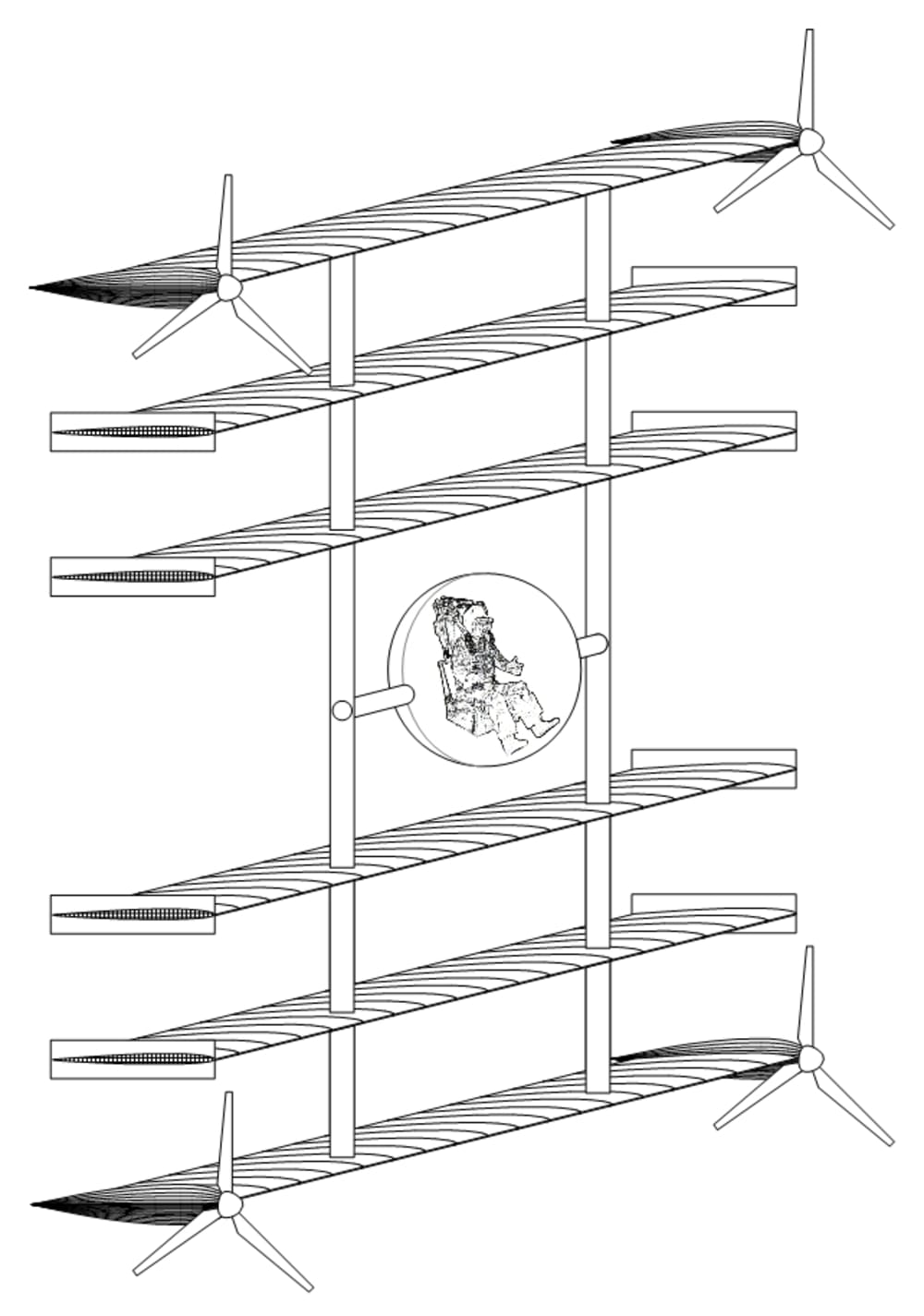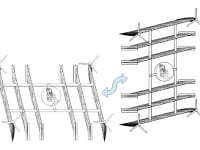The Compact Personal Aircraft or CPA (Patent Pending) is the embodiment of the future Air-Taxi. A novel improvement over its ancestor the co-planar multi-copter, the CPA may achieve up to a five fold increase in both flight time and fuel economy during horizontal, non-hover flight maneuvers. The observation that much of a typical helicopter's flight time is spent in the horizontal velocity flight maneuver, is self evident. The CPA architecture combines both VTOL capability of the helicopter with high fuel efficiency of fixed-wing aircraft, together in a compact planar area footprint.
Consider the high mechanical complexity of the helicopter tilt-rotor or the VTOL airplane's tilt-wing or tilt-rotor assemblies. These mechanically complex structures comprise numerous individual components, incurring both high manufacture and maintenance costs. The CPA, absent any dynamic airfoil control surfaces on an optimal number of parallel wings, absent associated mechanical linkages, servo actuators and control systems, provides for mechanical simplicity with diminished manufacture and maintainance costs.
Incorporation of a multi-wing assembly comprising an optimal plurality of parallel wings, affords the CPA embodiment extraordinary, <100mph airspeed performance characteristics over competing commuter VTOL aircraft embodiments designed for unrealistic 180mph operation. It is reasonable to believe, the average commuter Air-Taxi of the future will be more fuel sipping Honda Civic than fuel guzzling Ferrari.
The CPA is ideally suited to efficiently traversing the <50 mile distance encountered by the average daily commuter within an urban environment where VTOL operation is required for area constrained landing environments and where high fuel economy during horizontal flight is imperative. Today, the fuel guzzling helicopter is the only option in this application.
The CPA architecture affords enhanced stability and controllability during VTOL maneuvers in gusting wind conditions. An optimum number of parallel wings results in a minimization of wing planform cord, thus providing enhanced wind gust insensitive VTOL capability.
The CPA architecture provides for a high degree of accessibility of the fuselage and its interior. The CPA is imbued with dynamically adjustable fuselage orientation ability such that when the CPA is stationary on the ground, the fuselage floor may be oriented so as to be essentially resting horizontally at ground level thus permitting convenient accessibility of a fuselage interior cockpit, cabin or other payload compartment, from the exterior. Dynamically adjustable fuselage orientation also provides for a high external field-of-view optical visibility with high temporal availability from within the fuselage interior, regardless the operational orientation of the multi-wing assembly.
In summary, the CPA achieves high fuel economy under horizontal flight conditions. The CPA has a compact VTOL area footprint providing it suitability to planar horizontal area constrained environments such as the typical helicopter landing pad found atop urban high-rise buildings or hospitals and providing the CPA excellent storage ability. These features are not found on preexisting mono or bi-wing multi-rotor aircraft with their long wing spans, precluding them from engaging with space constrained compact landing footprints. These aforementioned characteristics are not simultaneously present in either conventional contemporary winged or wingless multi-rotor, tilt-wing, tilt-rotor or fixed-wing aircraft.
Like this entry?
-
About the Entrant
- Name:Brendan Graham
- Type of entry:individual
- Patent status:pending





